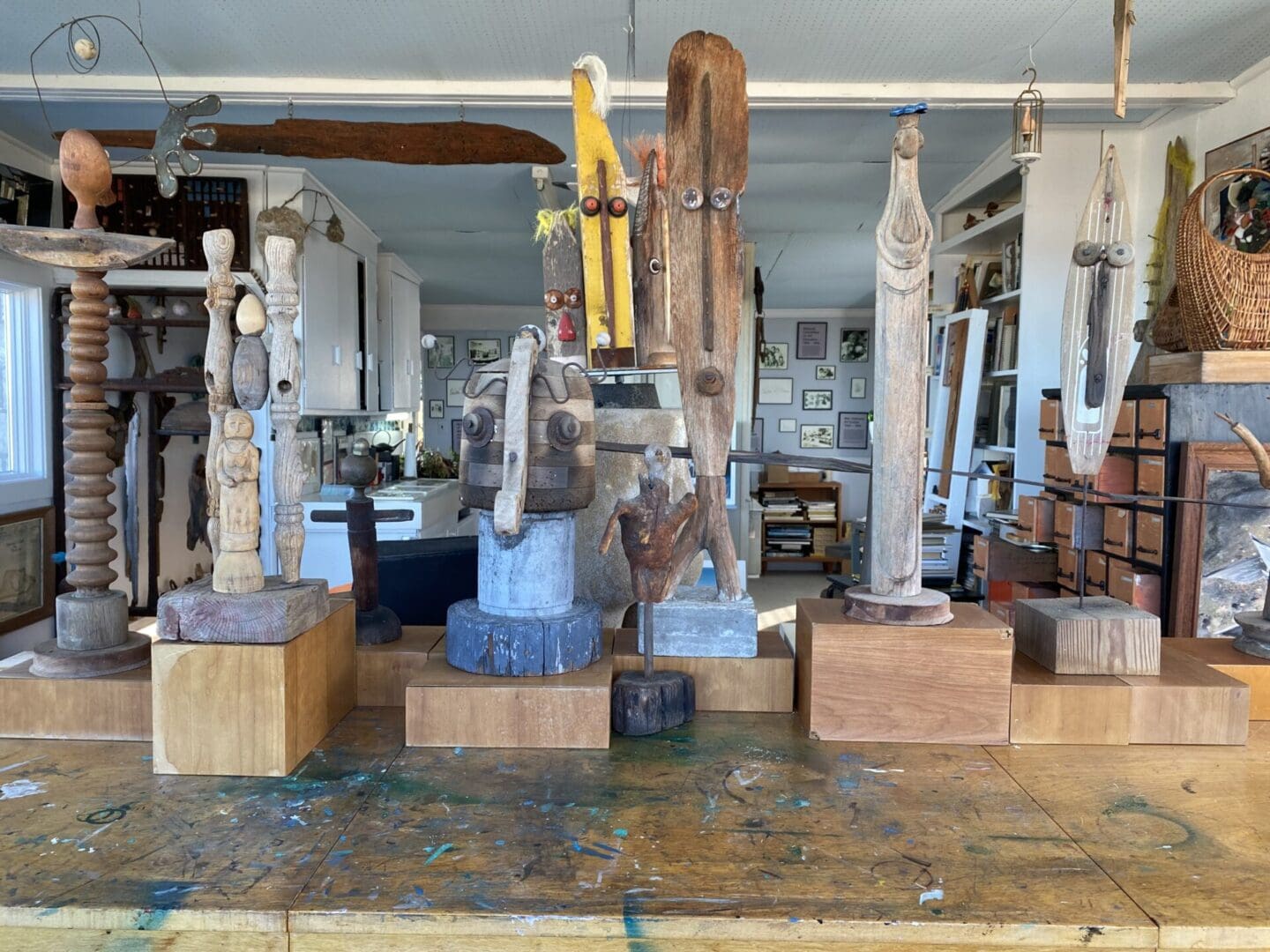
Mabel Birckhead DAmico, was an artist-teacher who devoted over five decades of her life to teaching art, concurrently developing and producing a prolific body of work as a fine artist. She believed that “art should become for all young people, regardless of their ability, a form of expression which they will use naturally and unselfconsciously throughout their lives”.
LIFE & EDUCATION
Mabel Birckhead began teaching at Rye High School in 1929, eventually becoming head of the Art Department, a post she held from 1939 to 1964. Born to Mabel and George Birckhead in Mt. Vernon, New York, on April 19, 1909, Mabel graduated from White Plains High School, attended Pratt Institute, Brooklyn, followed by Teachers College, Columbia University, where she met Victor DAmico in the late 1930s. They were married at the Ethical Culture School in 1945.
Mabel had a long-standing connection with Long Island. She had relatives in Greenport, had lived briefly in Huntington as a young child, and had camped with her family on the bluffs of remote and sparsely populated, pre-Carl Fisher Montauk. Mabel and Victor together visited Amagansett in 1939. They found a beach-front lot overlooking Gardiners Bay and Napeague Harbor in Lazy Point and in 1940 started to design and build a modernist home, including large glass windows throughout. They would expand their modest beach house to include an art studio for Mabel that faced spectacular water views and occupied a significant part of the second floor.
ARTISTIC PRACTICE
Mabel moved through various modes of expression using diverse materials like paint, glass, wood, lights, motors, and polyester resin, to name a few. All of these were revisited throughout her lifetime, as simultaneously she would discover and learn new mediums and techniques, her creative exploration never exhausted. Just as she was continually learning and looking at objects and materials in novel ways, Mabel encouraged that same freedom, openness, and inquisitiveness in her students. Her studio reveals the breadth of her experimentation and the acuity of her eye. For an exhibition at the Islip Art Museum in 2004, curator Janet Goleas described Mabels studio: “And in every corner, from every vantage point, and on every conceivable surface, there stands, sits or hovers a DAmico creation, the likes of torsos slowly spinning on invisible turntables, bulbous sprinklings of flashing lights, bleached roots and wood, mosaic windows, mobiles and table tops, doll heads heaped in pyramids or aligned in rows, glass spheres of all sizes and cantilevered reeds, oars and buoys”. Far from being a crowded or chaotic workspace, Mabels studio demonstrates a level of thought, organization, and inventiveness that carried through her fine art practice to her creative pedagogy.


TEACHING
Mabel DAmico was among the progressive artist-teachers of the early- to mid-20th century who radically evolved art education by centering it on the individuals innate ability for creative expression. In her role at Rye High School she made early contributions to MoMAs educational program and participated in the National Committee on Art Education (1942-1963). Alongside Victor, she formed part of the teaching staff for the world-traveling Childrens Art Carnival (1952-1963), led creative art education workshops sponsored by The Institute of Modern Art at MoMA and New York University (1964-65), and taught at The Art Barge (1980s).
IMPACT
Parallel to a teaching career that influenced and impacted individuals like artists Donna Dennis and Donna Maria de Creeft, and curator and museum director Rexford Stead, Mabel developed artwork that she exhibited in a number of solo and group exhibitions, mainly from the 1960s through the 1990s. While her work is found in various public and private collections, such as the Nelson A. Rockefeller Collection, Christs Church of Rye, Rye Library, and Guild Hall of East Hampton, the
DAmico Studio and Archive holds a major part of her creative output, making it accessible to researchers, art educators, art historians, and the greater public.
In an early essay titled“Teaching Democracy Through Art, Mabel wrote, “Art breaks the barriers of language, race and creed. It is an international language. Developing a fine sense of appreciation or art values is a large move toward eliminating intolerance”. Mabel embodied this belief and continues to teach and enrich us today through the legacy of her life and art.
Mabel DAmico died at her home in Amagansett, New York, in 1998.

